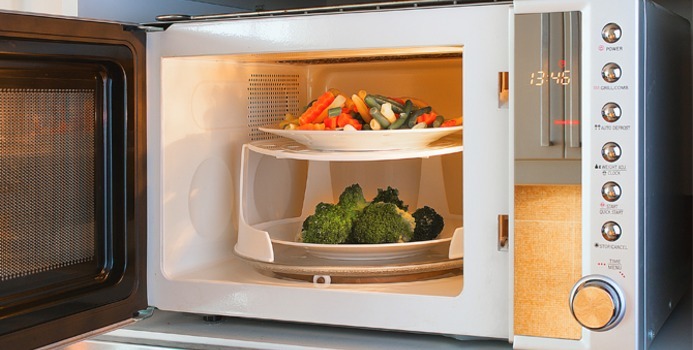Why Do Microwaves Hate Metals?

Why is it advised to take food out of metal containers before putting it into a microwave oven? Ignore potential dangers of metals in microwaves and focus on the efficacy of cooking the food.
This section requires Javascript.
You are seeing this because something didn't load right. We suggest you, (a) try
refreshing the page, (b) enabling javascript if it is disabled on your browser and,
finally, (c)
loading the
non-javascript version of this page
. We're sorry about the hassle.
Microwaves have wavelengths in the centimeter range and frequencies around f = 1 × 1 0 9 Hz . They're produced by a device called the magnetron which is the basis of the microwave oven Microwaves vibrate dipole molecules in food (like water) at high frequency, which produces a great quantity of heat energy.
When microwaves interact with the surface of metals, they're unable to penetrate into the metal or into any of its cavities. This is because all conductors maintain zero electric field in their interior (consider: if there were a non-zero electric field, charges would move around until the field was gone). This also implies that microwaves cannot penetrate into the cavities of a metal object, such as the interior of a metal food contained.
The majority of microwaves are therefore reflected by metal containers and they don't enter the food. This is suboptimal for the purposes of heating food.